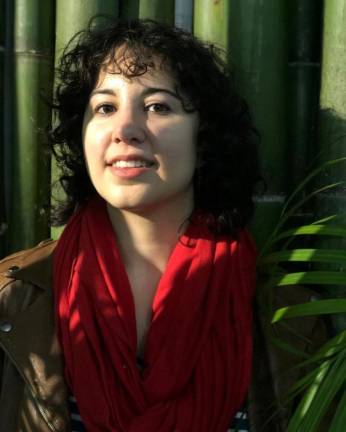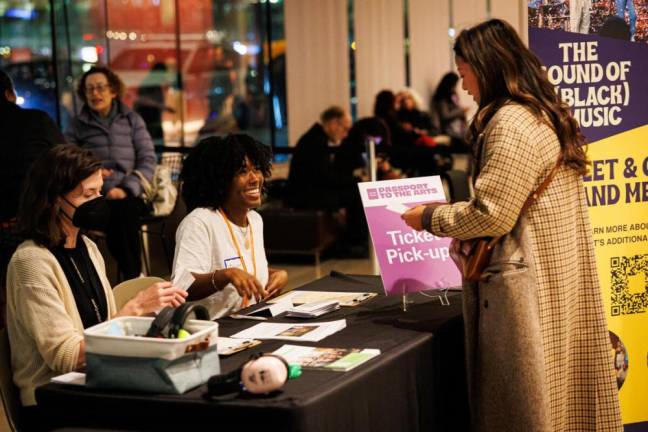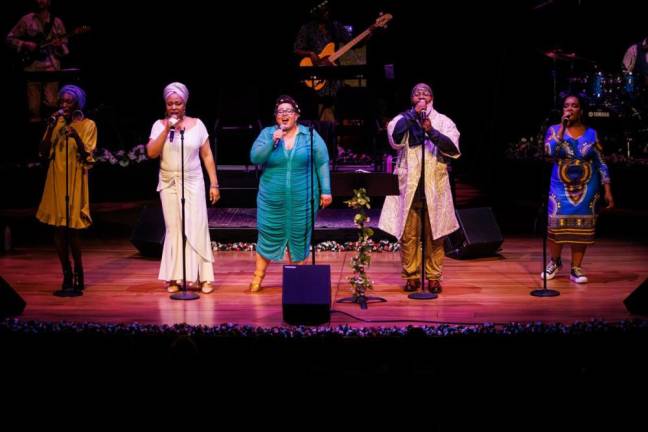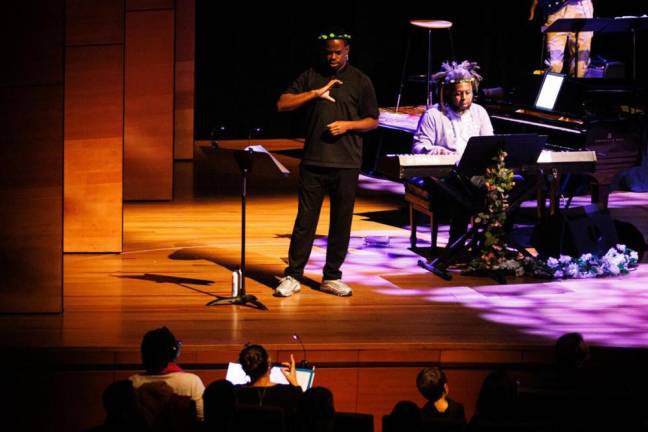She Brings Passion to Help Disabled Enjoy Lincoln Center
Entertainment




Kerry Candeloro peers through the glass walls of Alice Tully Hall at Lincoln Center for the Performing Arts, looking from her phone to the lobby windows and back again. A sped-up, bass heavy version of “Something Good” from “The Sound of Music” echoes in the distance. Candeloro, an access coordinator at Lincoln Center, is preparing for tonight’s performance of “Electric Root Presents the Sound of (Black) Music,” in which an all-Black group of musicians reimagine and perform the classic musical.
The performance will be “relaxed:” designed for people with autism, sensory or communication disorders or learning disabilities. In addition to serving as the main point of contact for interpreters and other contractors, Candeloro will need to oversee all their technical needs before the show begins. She’s waiting for two American Sign Language (ASL) interpreters to arrive, as she’s usually the one chosen to greet visitors from her team, whether they’re audience members or contractors. “It’s my resting nice face,” she says with a laugh.
A couple of hours earlier, Candeloro checks in with Oren Sauerhaft, a part-time access team employee. He sits at a desk in the corner of a supply closet, against the Braille embosser (currently broken) and shelves of “fidgets” for audience members on the autism spectrum to play with during performances.
In millennial-style business casual, Candeloro wears an oversized pale green blazer, black turtleneck, faded black jeans, and a gold necklace that spells out “VOTE,” with sunglasses atop her black hair streaked with grey.
“How’s it going, Oren?”
“Too many beanbags!”
Behind Sauerhaft, purple, blue, and red beanbags are stacked almost to the ceiling for use during the performance in the theater’s “chill-out area,” where audience members can go if they feel overstimulated.
“Too many beanbags,” Candeloro agrees. “We’ll get them out of here soon.”
Lincoln Center’s accessibility team provides assistance for audiences during everyday programming, designating accessible seating and distributing programs printed in Braille and large print; the team also creates opportunities for marginalized individuals to experience the arts.
Candeloro is excited about tonight’s show. “I’m learning sign language. I was nervous because of my hand, but everyone has been so nice,” she explains.
Candeloro, 29, was born with a congenital limb defect: she only has three fingers on her left hand, and that arm is about three-quarters the size of her right. She grew up an only child in Philadelphia; the only disabled person in her extended family, she spent most of her childhood and early adulthood without a disabled community or support system. “I just always felt a little alone,” she recalls. On the first day at her Catholic grade school, Candeloro’s mother introduced her to the administrators and explained her daughter’s disability. Their solution: give her an elevator key. They didn’t realize that her disability had no bearing on her ability to walk up and down stairs.
“I was born four years after the ADA—’Americans with Disabilities Act’—was passed. Growing up in the late 90s and 2000s, it was a very new time for these conversations to be had. I don’t think everybody knew exactly how to have them,” she says. When Candeloro was young, she needed her mom’s help with two-handed tasks, like putting her hair in a ponytail. But as she grew older, she found creative solutions, like keeping her hair cut short and using special magnetic clasps to put jewelry on with one hand.
Candeloro also remembers being bullied as a child. “I’m not a very confrontational person and I have a target on my hand—literally.” Her mom contemplated pulling her out of school when she was 12, but Candeloro refused. “I told her that if I leave that school, they win.”
Candeloro has been working at Lincoln Center for about a year and a half. Before the pandemic, she worked multiple theater jobs at a time. One day she’d be doing research for Oscar-winning costume designer Ann Roth; the next she’d be ushering guests to their seats at New York Theater Workshop.
“I was working five different jobs and just tiring myself out. Now that I’m almost 30 and my disabilities are affecting me more, I have had to figure out what’s possible for me,” she said.
It isn’t always easy for Candeloro to do this work. “I’m a disabled person helping disabled people,” she says. “It can be exhausting. I am trying to create boundaries.” In many previous jobs, Candeloro felt that she had to teach her supervisors how to appropriately treat disabled employees. One employer claimed that they “didn’t see her as disabled,” which she takes issue with: “There’s a difference between getting special treatment and getting the accommodations that you need. If you don’t see me as disabled, you’re not seeing a huge part of me.”
Kyra Armstrong, 25, calls herself Candeloro’s “emotional support co-worker.” She’s the only other full-time employee on their team who’s disabled. “It’s less draining emotionally and physically to be in this work together,” Armstrong said. “I feel lucky that we are in sync.”
Miranda Hoffner, director of accessibility at Lincoln Center and their boss, is not disabled, so considers Candeloro’s perspective vital. “Kerry is an amazing asset to the team—not only due to her lived experience and the amazing advocacy work she does,” she says. “She’s a professional who has worked in the arts for a long time.
When the ASL interpreters arrive, Candeloro takes them backstage to get their in-ear monitors set up. She asks a crew member to test the live-captioning software that allows people with hearing impairments to follow along during the performance. He doesn’t know what she’s talking about, so he points her to a producer somewhere in the maze of doors and monitors. She thanks him, sighs and carries on. “Access work is a lot of reminding people of things,” she explains. “It’s a lot of making it work. But we always do.”
By nighttime, the audience is buzzing with joy as the performers bounce around to the beat of “So Long, Farewell.” Candeloro finally gets a moment to pause and take in the show. The bass and drum overtake the rhythm; the singers wave their hands excitedly. “I hate to go and leave this pretty sight,” one sings. Candeloro bobs to the beat and smiles–she can feel the electricity all the way to the back of the theater.
Sara Braun is a freelance journalist and student at the Columbia Graduate School of Journalism.
“I was born four years after the ADA—’Americans with Disabilities Act’—was passed. Growing up in the late 90s and 2000s, it was a very new time for these conversations to be had. I don’t think everybody knew exactly how to have them.” Kerry Candeloro, Lincoln Center accessibility team